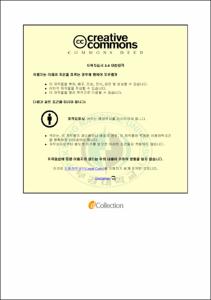국내산 갑각류의 부위별에 따른 중금속 함량 및 위해평가
- Abstract
- This study evaluates risk assessment and heavy metal contents in different parts of the crustacea in korea coastal.
In Korea, total seafood consumption has been gradually increasing. Especially, the Crustacea account for a great part of seafood consumption next to fish, shellfish and seaweed. This improvement in income levels and health craze as LOHAS with increasing interest in nutrition and functional aspects of crustacean became known in the award has been increased consumption. However, recent fisheries associated with hazardous substances such as heavy metals on the report of fisheries to food safety is to bring a vague distrust. Therefore, in Korea, mainly shellfish intake and heavy metal content in each part of the survey was based on this risk assessment was conducted.
We measured the heavy metal content of different part, flesh, crust , viscus and whole flesh of the domestic crustacea and has been assessed in relation to the Provisional Tolerable Weekly Intake (PTWI).
The samples is Fleshy shrimp (Fenneropenaeus chinensis), Kuruma shrimp (Marsupenaeus japonicus), Japanese fan lobster (Ibacus ciliatus), Black tiger (Penaeus semisulcatus), Prawn (Palaemon macrodactylus), White shrimp (Litopenaeus vannamei), Southern rough shirimp (Trachysalsmbria curvirostris) and Snow crab (Chione-cetes opilio), Three-spined shore crab (Helice tridens), Hair crab (Erimacrus isenbeckii), Red snow crab (Chinoecetes japonicus rathbun), Blue crab (Portunus trituberculatus) which is collected at the fish markets in the south and west sea of Korea. Each different parts of all samples were preprocessed with dry ashing pretreatment. The levels of heavy metal were measured by ICP (PERKIN ELMER OPTIMA 3000 DV, USA) and mercury analyzer (DMA-80, Mliestone, Italy).
As a result, seven kinds of flesh, crust, whole flesh the Hg, Pb, Cd contents are not exceed foreign standard of the heavy metals. Especially Cd content is slightly higher. In the case of crabs, Hg, Pb, Cd showed a moderate amount. Snow crab contained on the average 4.299 mg/kg in viscus, 3.015 mg/kg in flesh including viscus, red snow crab contained 3.804 mg/kg in viscus, 2.264 mg/kg in flesh including viscus.
In korea, shrimps and crabs an analysis of the heavy metal content, especially contetnt of snow crab and red snow crab tended to slightly higher. Snow crab and Red snow crab measured heavy metal content for the month(Feburary, March, April, May) to purchase and heavy metal content in the sample examined. Usually with a monthly baseline of snow crab and red snow crab exceeded the toxic heavy metal content. The most important thing is viscus in the Cd content. On February red snow crab built up reserves to 26.147 mg/kg with only the area that constantly must be careful to eat.
In the risk assessment of Hg, 0.00 to 0.09% as compared to PTWI. Crab's to 0.01 to 0.10% in the case of a female crab flesh showed highest number. Risk assessment of Pb shrimp's and crab's PTWI compared to the partly results for heavy metal content from 0.00 to 0.02%, each, from 0.00 to 0.01%. Relatively low levels of Hg than the results showed the toxic heavy metals through the consumption of crustacea of Pb showed a little.
Monitoring of heavy metals in the Hg, Pb compared to the amount of Cd content of the risk assessment results, just as high also showed high levels compared to PTWI. 0.00 to 1.24 percent compared to PTWI from shrimp to shrimp appeared highest in the viscus, crab's PTWI from 0.01 to 2.00% as compared to male crabs showed the highest number in the viscus. However, the risk assessment of Cd compared to PTWI levels also appeared to be relatively safe, and crustacea risk associated with the consumption of Hg were also less likely. Therefore, lead, mercury and cadmium from the domestic crustacea consumption is not considered to represent a significant health risk. However, specific part should be avoided for a long time to eat.
- Issued Date
- 2012
- Awarded Date
- 2012. 2
- Type
- Dissertation
- Publisher
- 부경대학교
- Department
- 대학원 식품공학과
- Advisor
- 조영제
- Table Of Contents
- 목 차
Abstract 1
서 론 1
재료 및 방법 5
1. 실험 재료 5
2. 시약 및 표준물질 5
3. 중금속 분석 6
3.1. 건식회화법 6
3.2. 습식회화법 6
3.3. 기기분석 및 측정 7
4. 갑각류 섭취량 및 안전성 평가 7
결과 및 고찰 9
1. 전처리방법에 따른 실험법 확립 9
1.1. 인증표준물질을 이용한 회수율 측정 9
1.2. 전처리 방법 비교 11
2. 시중 유통 갑각류의 부위별 중금속 함량 13
2.1. 새우류 부위별 중금속 함량 13
2.2. 게류 부위별 중금속 함량 21
2.3. 갑각류 월별 중금속 함량 27
3. 갑각류 섭취량을 통한 안전성 평가 34
3.1. 수은의 안전성평가 34
3.2. 납의 안전성평가 38
3.3. 카드뮴의 안전성평가 41
요 약 45
참 고 문 헌 48
감사의 글 57
- Degree
- Master
- Files in This Item:
-
-
Download
 국내산 갑각류의 부위별에 따른 중금속 함량 및 위해평가.pdf
기타 데이터 / 690.79 kB / Adobe PDF
국내산 갑각류의 부위별에 따른 중금속 함량 및 위해평가.pdf
기타 데이터 / 690.79 kB / Adobe PDF
-
Items in Repository are protected by copyright, with all rights reserved, unless otherwise indicated.